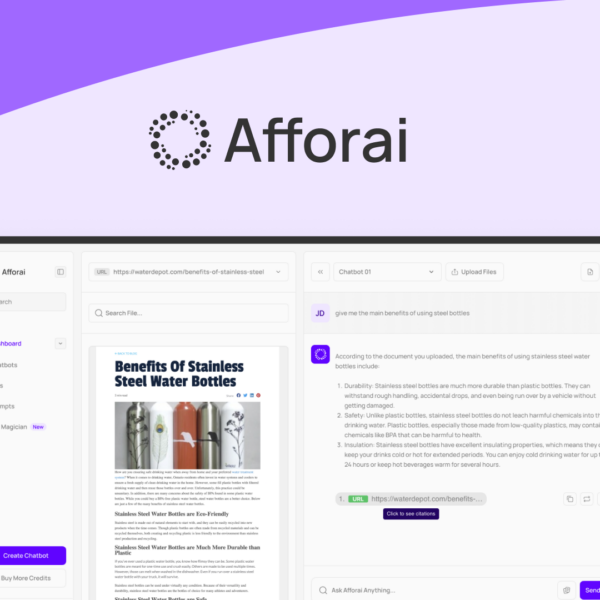SaaS failures are rampant in today’s tech landscape, but understanding the reasons behind these failures can help entrepreneurs skyrocket their chances of success. Curious about how to navigate the challenges? Let’s dive in together!
Introduction: The Hard Truth About SaaS Startups
The journey for SaaS startups can be rocky. Many founders dive in thinking success is guaranteed. But the truth is, countless startups hit the wall before they take off. Understanding these challenges can help new companies navigate this tough world.
Common Challenges Faced by SaaS Startups
SaaS startups often struggle with issues like cash flow, product-market fit, and customer retention. If your product doesn’t meet the needs of your customers, it’s hard to succeed. Money management is crucial too; running out of cash can end your dreams quickly.
The Importance of Product-Market Fit
Getting your product to fit the market is key. This means ensuring that your solution solves a real problem for your audience. Many startups fail when they skip this step. Ask users for feedback early and often. It can make a huge difference.
Customer Retention is Key
Acquiring customers is only half the battle. Keeping them around is an ongoing challenge. High churn rates can hurt your growth. Focus on providing excellent customer service and regularly check in with users. Happy customers are your best marketing tool.
Understanding the Market Landscape
Knowing who your competitors are and what they offer is essential. Study their strengths and weaknesses. This can give you insights into how to position your SaaS product effectively. Use this knowledge to stand out and appeal to your target customers.
The Role of a Strong Team
Your team is the backbone of your startup. Having people with diverse skills can lead to better problem-solving. Effective communication and shared goals can keep everyone aligned. Take the time to build a strong, collaborative culture.
Bad Product-Market Fit

Bad product-market fit is a common reason many SaaS startups fail. This means your product doesn’t meet the needs of your target audience. When this happens, customers won’t see value in what you offer. As a result, they won’t buy it or stick around.
Understanding Your Customers
To find good product-market fit, start by knowing your customers. What problems do they face? Conduct surveys or interviews to gather feedback. Test your ideas early. This will help you shape a product that truly solves their problems.
Benefits of a Strong Product-Market Fit
When you have a strong product-market fit, customers are more likely to buy and stay loyal. They’ll tell their friends about your product, too. This word-of-mouth can drive more sales and growth. It’s all about creating something that resonates with your audience.
Common Signs of Bad Product-Market Fit
Watch for signs that indicate you have a bad fit. If your customers frequently complain or if you see high churn rates, these are red flags. Also, if user engagement is low, it’s a signal your product may not meet their needs effectively.
How to Improve Product-Market Fit
To improve your product-market fit, consider pivoting your offering. This could mean changing features, adjusting pricing, or even targeting a new audience. Be open to making these changes based on continuous feedback. Regularly tweak your product to keep it aligned with market demands.
Learning from Competitors
Study competitors who have succeeded in your market. What are they doing right? Learn from their strategies and mistakes. This can help you understand your own positioning better and guide you toward achieving product-market fit.
Cash Flow Issues and Unsustainable Burn Rates
Many SaaS startups face cash flow issues, which can threaten their survival. Cash flow refers to the money going in and out of your business. If expenses exceed income for too long, it leads to serious problems.
Understanding Cash Flow
Good cash flow management is crucial. It helps you pay bills on time and keep operations running smoothly. Without it, you may struggle to meet payroll or invest in growth opportunities. Always track your cash flow closely to avoid unwelcome surprises.
Identifying Burn Rate
Burn rate is how fast you’re spending money. If your burn rate is too high, you may run out of cash quickly. For startups, it’s easy to overspend on marketing or development. Keep your spending in check, especially in the early stages.
Signs of Cash Flow Problems
There are several signs that your cash flow might be in trouble. Look for late payments from customers, increased borrowing, or unpaid bills. If you have to constantly dip into savings, that’s a warning sign.
Strategies to Improve Cash Flow
Improving cash flow starts with careful planning. Set a budget and stick to it. Focus on collecting payments faster and consider offering discounts for early payments. Managing expenses wisely is equally important; cut unnecessary costs to boost cash reserves.
Funding Options for Cash Flow Issues
If your cash flow problems persist, consider external funding. This could include loans, investors, or grants. Look for options that fit your business model. Be mindful of how these funds will affect your future cash flow and control.
Poor Go-to-Market Strategy

A poor go-to-market strategy can cripple a SaaS startup. This strategy helps you plan how to sell your product effectively. If it’s not well thought out, you might struggle to attract customers. Let’s look at what makes a solid go-to-market strategy.
Understanding Your Target Market
First, know your target market inside and out. Who are you selling to? Understand their needs and pain points. Use surveys and research to gather information. This will help you tailor your product and messaging directly to them.
Clearly Define Your Value Proposition
Your value proposition explains why customers should choose your product. It should be clear and compelling. Focus on the unique benefits your product offers. Make sure this message is front and center in your marketing materials.
Choosing the Right Sales Channels
The sales channels you use are vital to your strategy. Decide if you’ll sell directly, through partners, or online. Each channel needs a different approach. Pick the ones that align best with your target audience for better success.
Effective Marketing Strategies
Your marketing strategy plays a big role in your go-to-market plan. Use a mix of online and offline tactics to reach your audience. Social media, content marketing, and webinars can help build awareness. Ensure your messaging is consistent across all channels.
Testing and Iteration
Don’t be afraid to try new things and learn from your mistakes. Track your results and see what works. Gather feedback from your customers regularly. Use this data to tweak your strategy for better outcomes.
High Customer Churn
High customer churn is a major issue for SaaS businesses. Churn refers to the percentage of customers that stop using your product. When churn rates are high, it can hurt your company’s growth and profitability.
Understanding Customer Churn
To tackle high churn, first, understand why it happens. Customers may leave due to poor service, unmet needs, or better options from competitors. Identifying these reasons is key to creating effective solutions.
Common Causes of High Churn
Some common causes include lack of value, complicated onboarding, and insufficient customer support. If users don’t see the benefits of your product, they will likely leave. Make sure you meet their expectations right from the start.
Importance of Customer Feedback
Gathering customer feedback is crucial. Use surveys or interviews to learn how they feel about your product. This data can help you find areas to improve and keep users engaged.
Strategies to Reduce Churn
Implement strategies to reduce churn. Enhance onboarding processes to help new users get started easily. Offer excellent customer support and ask for feedback regularly. Develop features based on customer needs to show that you value their opinions.
Building Strong Customer Relationships
Building strong relationships with customers can lead to loyalty. Engage with them through newsletters, social media, and webinars. Keeping the lines of communication open will keep customers invested in your product.
Founder Conflict and Team Issues

Founder conflict and team issues can disrupt a SaaS startup’s success. When founders clash, it affects the whole team’s morale. It’s essential to address these conflicts to foster a healthy work environment.
Common Causes of Conflict
Conflicts often arise from differing visions, roles, and responsibilities. If founders have different ideas on where to take the company, tensions may develop. Clear communication can help prevent misunderstandings.
The Importance of Open Communication
Open communication is vital to resolving conflicts. Encourage team members to express their thoughts. Regular meetings can provide a platform for discussing issues before they escalate. Build a culture of transparency to strengthen relationships.
Establishing Clear Roles
Creating well-defined roles can minimize friction. Ensure every team member knows their responsibilities and expectations. This will reduce confusion and help everyone work together more effectively.
Seeking External Help
Sometimes, seeking external help can be beneficial. Consider hiring a mediator or coach to help resolve major conflicts. They can provide an unbiased view and help teams find common ground.
Building a Strong Team Culture
Invest in building a strong team culture. Encourage collaboration, trust, and support among team members. Celebrate successes together and create opportunities for team bonding. A positive culture can lead to better teamwork and less conflict.
SaaS Success Stories: Slack, Adobe, and Dropbox
Success stories from SaaS companies like Slack, Adobe, and Dropbox show what works. These companies faced challenges but found ways to thrive. They offer valuable lessons for new startups in the industry.
Slack: Revolutionizing Communication
Slack changed how teams communicate. It provides a platform where users can chat, share files, and collaborate in real-time. By focusing on user-friendly design, Slack made team communication simple and efficient. Their success highlights the importance of addressing customer pain points.
Adobe: Transitioning to Subscription Model
Adobe successfully shifted from selling software to a subscription model. This change allowed them to provide continuous updates and new features. Customers appreciate having access to the latest tools without large upfront costs. Adobe’s strategy showcases how adapting business models can lead to growth.
Dropbox: Simplifying File Sharing
Dropbox made file sharing easy and accessible. With a simple interface and cloud storage, users can store and share files easily. Their freemium model attracted many users, allowing them to upgrade as needs grew. This approach demonstrates the power of offering value upfront.
Lessons Learned
These success stories teach valuable lessons. Focus on user experience, adapt to market changes, and find ways to deliver value. By learning from these leaders, new SaaS startups can create their paths to success.
Tips to Avoid SaaS Startup Failure

Starting a SaaS business is exciting, but many face challenges that can lead to failure. Here are some tips to help you avoid common pitfalls and succeed.
Validate Your Idea
Before launching, validate your idea with real users. Conduct surveys and interviews to learn if there’s demand. Gathering feedback early can save you time and resources.
Focus on Product-Market Fit
Achieving strong product-market fit is key. Make sure your product meets a genuine need. Listen to customer feedback and adjust your features accordingly. This ensures you’re delivering real value.
Manage Your Finances Wisely
Keep a close eye on your cash flow. Understand your expenses and set a budget. Avoid overspending on unnecessary features or marketing until you have predictable revenue.
Build a Great Team
Your team plays a vital role in your success. Hire people with the right skills and attitudes. Foster a collaborative culture where everyone feels valued and motivated to contribute.
Provide Excellent Customer Support
Customer support can make or break your SaaS business. Offer quick responses to customer inquiries. Helping users effectively can lead to greater satisfaction and lower churn rates.
Iterate and Improve
Always be ready to iterate based on customer input. Regularly update your product and add new features. Keeping your offering fresh and relevant is an essential part of retaining customers.
Check Product-Market Fit Before You Scale
Checking your product-market fit before scaling is crucial for success. Product-market fit means your product meets the needs of a specific market. If you don’t have it, scaling could lead to failure.
Assessing Your Fit
To check your product-market fit, gather feedback from current users. Ask them if your product solves their problems effectively. Use surveys, interviews, or feedback forms for this.
Look at Usage Data
Analyze how often and in what ways customers use your product. High engagement can indicate a strong fit. Look for trends in usage patterns to understand how well your product is being received.
Monitor Customer Satisfaction
Keep an eye on Net Promoter Score (NPS) or customer satisfaction scores. These metrics help you measure how likely customers are to recommend your product. High scores usually indicate a good product-market fit.
Avoid Scaling Too Early
It’s tempting to scale when you see initial success. However, skipping product-market fit assessment can hurt your startup. Focus on refining your product and ensuring it meets customer needs first.
Iterate Based on Feedback
Use the feedback to make improvements. Adjust features, pricing, or messaging based on what resonates with users. Continuous improvement can help you solidify your product-market fit.
Manage Your Money Smart

Managing your money smart is essential for SaaS startups. Good financial practices can determine your success. Here are some tips to keep your finances in check.
Set a Budget
Start by creating a clear budget. List your expected income and expenses. This gives you a roadmap to follow. Update your budget regularly to reflect any changes in your business.
Monitor Cash Flow
Keep a close eye on your cash flow. Know when money comes in and goes out. Cash flow issues are common in startups, so tracking it can help you avoid surprises.
Control Costs
Look for ways to cut unnecessary expenses. Evaluate what you truly need to operate. Cut back on luxuries until you have stable revenue. Every dollar saved adds up over time.
Prepare for Unexpected Expenses
Unexpected costs can pop up anytime. Set aside a small reserve fund for emergencies. This will help you handle surprises without panic.
Seek Professional Help
Don’t hesitate to hire an accountant or financial advisor. They can help you make informed decisions. Their expertise can provide valuable insights into managing your finances better.
Have a Smart Market Entry Plan
Having a smart market entry plan is crucial for any SaaS startup. This plan helps you navigate challenges when introducing your product to the market. Here are key steps to create an effective market entry strategy.
Research Your Market
Start with thorough market research. Understand your target audience and their needs. Identify key competitors and analyze their strengths and weaknesses. This knowledge will guide your strategy.
Define Your Unique Value Proposition
Your unique value proposition explains what sets your product apart. Clearly outline the benefits your product provides. This will help you attract customers and make your marketing more effective.
Choose the Right Distribution Channels
Selecting the right distribution channels is essential. Decide if you’ll sell directly, through partners, or online. Choosing the right channels can reach your target audience more effectively.
Create a Marketing Plan
Develop a marketing plan that targets your audience. Use multiple channels like social media, email, and content marketing. Tailor your messaging to resonate with your audience and create excitement about your launch.
Set Measurable Goals
Set clear, measurable goals for your market entry. Whether it’s revenue targets or user acquisition, having specific goals helps you track your success. Regularly evaluate your progress and adjust your strategy as needed.
Put Customer Retention First

Putting customer retention first is vital for any SaaS business. Keeping existing customers is often cheaper than acquiring new ones. Here are some effective strategies to enhance customer retention.
Engage with Your Customers
Regular engagement is key. Use newsletters, social media, and updates to keep customers informed. Share helpful tips or new features to remind them of your value.
Provide Excellent Support
Customer support can make a big difference. Offer various support channels like chat, email, and phone. Quick and helpful responses create a positive experience and build trust.
Gather Feedback Regularly
Ask customers for feedback on your product and services. Use surveys to understand their needs and issues. Acting on feedback shows you value their opinions, which fosters loyalty.
Implement a Loyalty Program
A loyalty program can motivate customers to stay. Offer rewards for referrals or long-term use. This not only enhances customer satisfaction but can also attract new users.
Monitor Churn Rates
Keep an eye on your churn rates to identify issues early. If customers are leaving, analyze the reasons. Use this information to make improvements and reduce future churn.
Build the Right Team and Culture
Building the right team and culture is essential for SaaS success. A strong team can drive innovation and growth. Here are key steps to create an effective team and workplace culture.
Hire for Diversity
Diversity brings fresh ideas and perspectives. Aim to hire individuals from different backgrounds and experiences. A diverse team can solve problems more creatively and effectively.
Define Clear Roles
Clearly define roles and responsibilities for each team member. This clarity helps everyone know their tasks and how they fit into the bigger picture. It improves accountability and teamwork.
Foster Open Communication
Encourage open communication within your team. Create an environment where everyone feels comfortable sharing ideas. Regular check-ins can help team members express concerns and provide feedback.
Promote Continuous Learning
Support professional development and continuous learning. Offer training programs or workshops to help employees grow their skills. This investment shows you value their growth and can boost morale.
Celebrate Successes
Recognize and celebrate achievements, both big and small. Celebrations help build a positive culture and reinforce teamwork. Consider team outings or shout-outs to acknowledge hard work.
Integrate AI to Get Ahead

Integrating AI into your SaaS product can give you a competitive edge. AI helps automate tasks, analyze data, and improve customer experiences. Here are some ways to effectively incorporate AI into your business.
Identify Key Areas for AI
Start by identifying the areas where AI can make the most impact. Look for repetitive tasks that consume time or complex data analysis needs. These are great opportunities for AI to shine.
Enhance Customer Support
Use AI-driven chatbots for customer support. They can respond to common inquiries 24/7, helping users faster. This improves customer satisfaction while freeing up human agents for more complex issues.
Personalize User Experiences
AI can analyze user data to offer personalized recommendations. Tailored content keeps users engaged and encourages them to return. The more relevant your product feels, the more likely customers are to stick around.
Automate Data Analysis
AI tools can process large data sets quickly. They find trends and insights that humans might miss. This allows your team to make informed decisions based on real-time data.
Invest in AI Technologies
Consider investing in AI technologies or platforms. Tools like machine learning and natural language processing can enhance your offerings. Choose solutions that align with your business goals and customer needs.
Key Metrics to Track in Your SaaS
Tracking key metrics is vital for the success of your SaaS business. Understanding these metrics helps you make informed decisions. Here are the most important metrics you should monitor.
Monthly Recurring Revenue (MRR)
MRR indicates your predictable revenue. It reflects all subscription payments you receive every month. Regularly tracking MRR helps you forecast future earnings accurately.
Customer Acquisition Cost (CAC)
CAC measures how much you spend to acquire a new customer. It includes marketing and sales costs. Keeping your CAC low is important for profitability.
Churn Rate
Churn rate shows the percentage of customers who cancel their subscriptions. A high churn rate can signal problems in your product or service. Monitoring this metric helps you understand customer satisfaction.
Customer Lifetime Value (CLV)
CLV estimates how much revenue a customer will generate during their entire relationship with your business. Increasing CLV means focusing on retention and upselling to existing customers.
Active Users
Track both daily active users (DAU) and monthly active users (MAU). These metrics show how engaged your customers are with your product. Understanding user activity can guide feature development and marketing efforts.
Crisis Management Strategies for SaaS Startups

Crisis management is crucial for SaaS startups facing unexpected challenges. Having a plan in place can help you respond effectively. Here are some strategies to manage crises successfully.
Identify Potential Crises
Start by identifying potential crises your startup may face. This includes technical failures, data breaches, or sudden market changes. Understanding risks allows you to prepare in advance.
Establish a Communication Plan
Clear communication is key during a crisis. Create a communication plan that outlines how you’ll inform your team and customers. Keeping everyone updated helps maintain trust and reduces panic.
Create a Response Team
Form a crisis response team with key members from different departments. This team should be ready to act quickly. Assign roles so everyone knows their responsibilities during a crisis.
Develop Contingency Plans
Have contingency plans ready for various scenarios. This might include backup systems or alternative services. Having options prepared allows your team to respond effectively without wasting time.
Learn from Each Crisis
After managing a crisis, analyze what happened and how you responded. Gather feedback from your team on what worked well and what didn’t. Use this information to improve your crisis management plans.
Conclusion: Turning the Odds in Your Favor
Turning the odds in your favor requires focus and smart decision-making. Use the insights gained from your journey to guide your future actions. Always strive to learn and adapt as you grow.
Stay Informed
Keep up with industry trends and best practices. This knowledge helps you stay competitive. Regularly read articles, attend webinars, and participate in networking events.
Measure Your Success
Use key performance metrics to assess your progress. Track your growth, customer satisfaction, and financial health. These numbers can guide your strategy and highlight areas for improvement.
Embrace Change
Be ready to pivot when necessary. If something isn’t working, don’t hesitate to make changes. Flexibility can lead to new opportunities and better outcomes.
Keep Customer Needs in Focus
Always prioritize your customers’ needs. Stay connected with them through feedback and support. Happy customers are key to your long-term success and growth.
Invest in Your Team
A strong team can propel your business to new heights. Provide training and encourage collaboration. Invest in their growth, as their success contributes to your company’s success.




